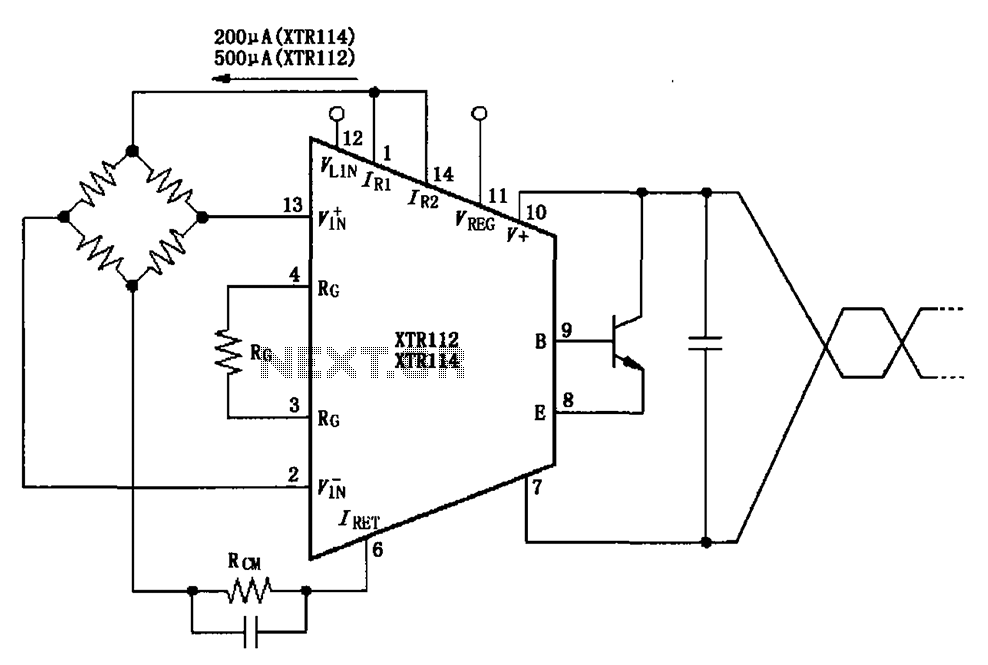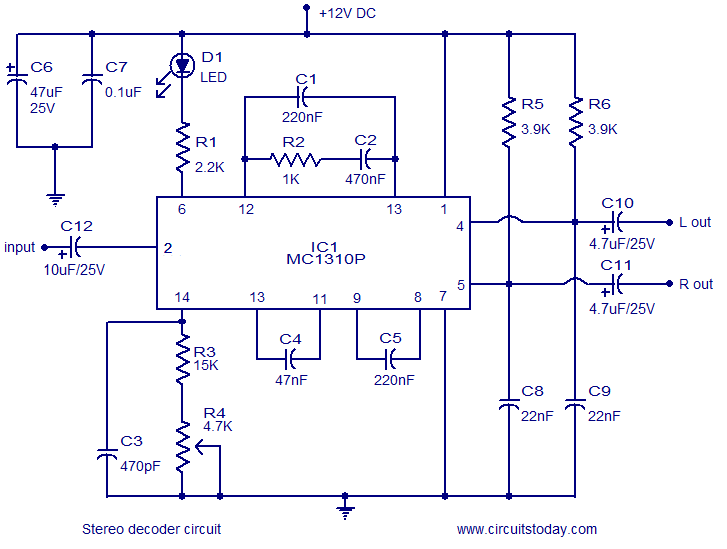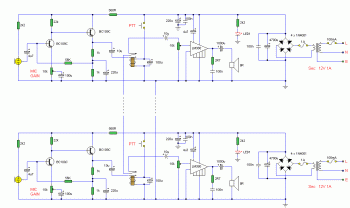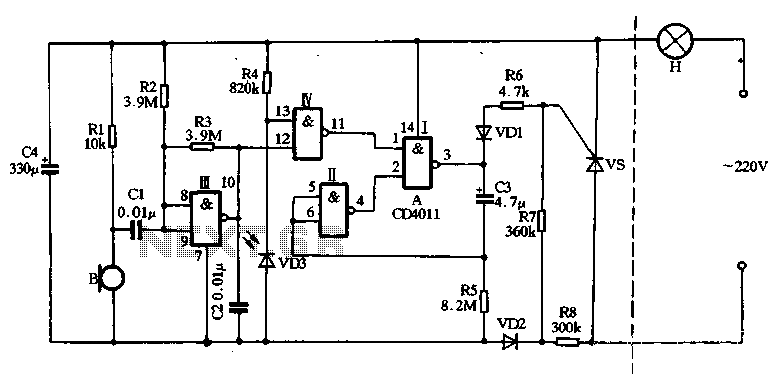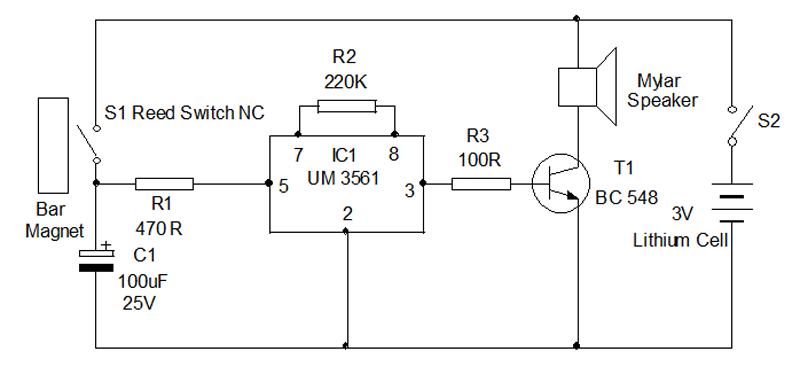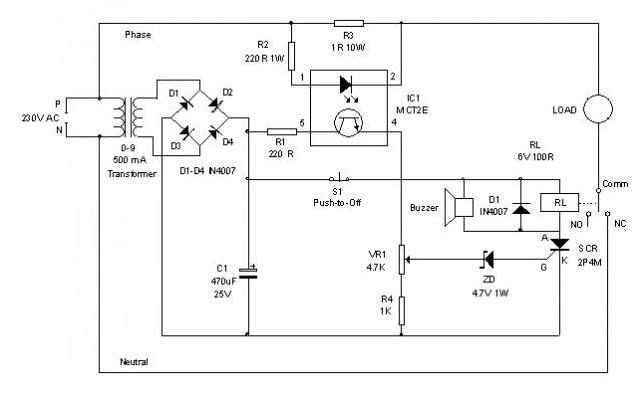
20M Cw Transmitter Circuit
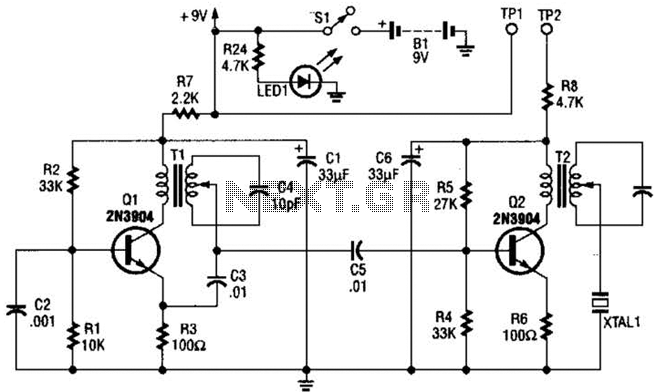
The transmitter features a VXO circuit that drives a keyed amplifier. This keyed amplifier powers an MRF 476 final amplifier, producing approximately 2 watts of output. Additionally, a solid-state T-R switch is incorporated for the receiver. The component values provided are specific to the 20-meter band.
The transmitter circuit operates on the 20-meter amateur radio band, which spans frequencies from 14.000 MHz to 14.350 MHz. The VXO (Voltage Controlled Oscillator) circuit generates a stable frequency that is modulated to transmit signals. The keyed amplifier is designed to enable or disable the transmission, ensuring that the amplifier only operates during transmission periods, thus conserving power and reducing interference.
The MRF 476 final amplifier is a high-performance transistor that is capable of delivering 2 watts of output power. Its design allows for efficient amplification of the VXO signal, ensuring that the transmitted signal maintains clarity and strength. The output stage of the amplifier is crucial for achieving the desired transmission range and quality.
Incorporating a solid-state T-R (Transmitter-Receiver) switch is essential for seamless operation between transmission and reception modes. The solid-state design enhances reliability and minimizes switching noise, which is important for maintaining signal integrity during operation.
The component values indicated in the schematic are tailored for optimal performance within the 20-meter band, ensuring that the transmitter operates efficiently and effectively across the specified frequency range. Proper selection of components such as capacitors, resistors, and inductors is critical to achieving the desired frequency stability and output power. Adjustments may be necessary based on specific operating conditions or desired performance characteristics. The transmitter has a VXO circuit to drive an amplifier that is keyed. The keyed amplifier drives an MRF 476 final amplifier, which delivers about 2-W output. A solid-state T-R switch is included for the receiver. The parts values shown are for the 20-meter band. 🔗 External reference
The transmitter circuit operates on the 20-meter amateur radio band, which spans frequencies from 14.000 MHz to 14.350 MHz. The VXO (Voltage Controlled Oscillator) circuit generates a stable frequency that is modulated to transmit signals. The keyed amplifier is designed to enable or disable the transmission, ensuring that the amplifier only operates during transmission periods, thus conserving power and reducing interference.
The MRF 476 final amplifier is a high-performance transistor that is capable of delivering 2 watts of output power. Its design allows for efficient amplification of the VXO signal, ensuring that the transmitted signal maintains clarity and strength. The output stage of the amplifier is crucial for achieving the desired transmission range and quality.
Incorporating a solid-state T-R (Transmitter-Receiver) switch is essential for seamless operation between transmission and reception modes. The solid-state design enhances reliability and minimizes switching noise, which is important for maintaining signal integrity during operation.
The component values indicated in the schematic are tailored for optimal performance within the 20-meter band, ensuring that the transmitter operates efficiently and effectively across the specified frequency range. Proper selection of components such as capacitors, resistors, and inductors is critical to achieving the desired frequency stability and output power. Adjustments may be necessary based on specific operating conditions or desired performance characteristics. The transmitter has a VXO circuit to drive an amplifier that is keyed. The keyed amplifier drives an MRF 476 final amplifier, which delivers about 2-W output. A solid-state T-R switch is included for the receiver. The parts values shown are for the 20-meter band. 🔗 External reference
